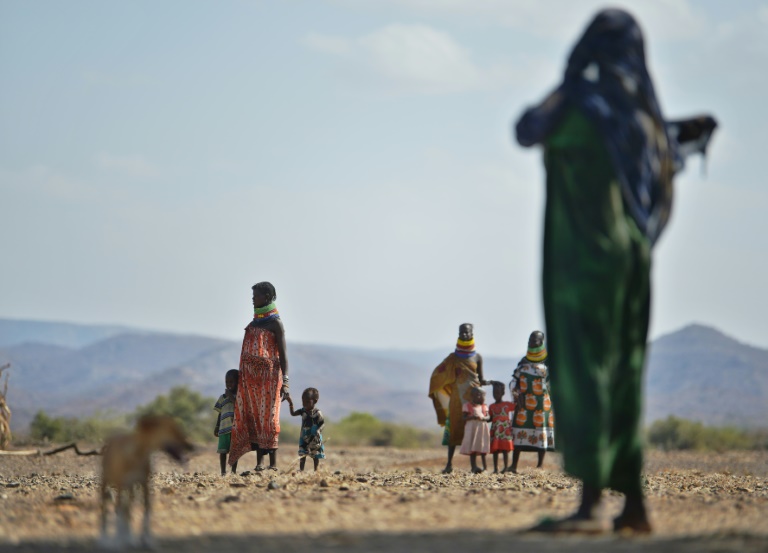At least 2.4 million people in Kenya risk going hungry by November as drought ravages the north and east of the country, a nearly threefold increase from last year, the World Food Programme warned Friday.
The East African country has been hit by an accumulation of calamities in recent years, including a months-long locust invasion from December 2019 and poor rainfall in 2020 and 2021, which has left the arid northern and eastern regions facing an emergency.
President Uhuru Kenyatta declared the drought a natural disaster last month, with 2.1 million people already grappling with hunger, according to the National Drought Management Authority (NDMA).
The WFP’s alarming projection is nearly three times the figure recorded last year between October and December, when 852,000 people were facing severe food insecurity, the UN agency said.
“This drought comes right on the back of Covid-19 which has had a tremendous economic impact on livelihoods. It comes on the back of locusts and, in some areas, floods,” WFP representative and country director Lauren Landis told AFP.
“We’re desperately worried that the next short (rainy) season coming in October will also fail and that means then we’re going to be in (an) extremely dire situation,” she said.
“I fear we’re going to reach the level of 2017, our last big drought here in Kenya. I think we’re looking at 2.5 million people in the coming months that will be affected.”
East Africa endured a harrowing drought in 2017 which also brought neighbouring Somalia to the brink of famine.
Experts say extreme weather events are happening with increased frequency and intensity due to climate change.
– Malnourished children –
The drought in Kenya has already left vulnerable populations reeling, the WFP said, with over 465,200 children under five and more than 93,300 pregnant and breastfeeding women suffering from acute malnutrition.
The Kenyan government announced earlier this month that it had allocated two billion shillings ($18 million, 15.5 million euros) to support an emergency response, with an emphasis on providing clean drinking water to residents of Kenya’s 23 worst-hit counties.
“Experts are telling us signs are showing we might not get good rains, so we are preparing for the long haul,” said Eugene Wamalwa, the minister in charge of decentralisation.
The Council of Governors, which brings together the leaders of the country’s 47 counties, said they had set aside 1.34 billion shillings to fund emergency operations.
The authorities have also dispatched 14 trucks of food for livestock, the main source of income in the affected regions.
The food and water shortages have severely affected the ability to farm crops and rear cattle, raising the risk of conflict as people compete for access to land and essential supplies.
– Human-animal conflict –
As conditions have worsened, several instances of violence have been reported, with pastoralists clashing over access to increasingly scarce water points.
Human-animal conflict has also increased. In mid-August, two elephants escaped from a reserve and entered the town of Isiolo in central Kenya, where they injured a man who tried to chase them away.
According to the Kenya Wildlife Service, the elephants left the reserve in search of water and food.
“Drought brings together a conflict for resources. Everyone is searching for water, everyone is searching for feed for livestock, farmers are trying to still grow crops, all doing it with limited resources,” said Landis.
“We’ve already seen (violence) in many places in Kenya and I sense it will only get worse.”
The WFP has appealed for $139 million (120 million euros) in fresh funding to tackle the humanitarian crisis, with only $28 million raised so far.
“That’s simply for getting us through to the next rainy season. Should that rainy season fail, the needs will be even higher,” Landis warned.
“We’ve really reached the breaking point.”









